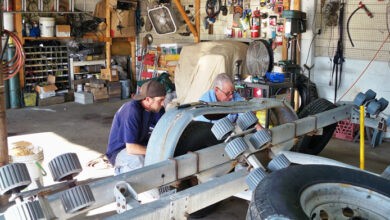Would you have to pay if you bump your vehicle into a guardrail?

Guardrails are the gift of modern science. But then, it has to be, because neither were vehicles running at miles-per-hour on the road earlier. When motor vehicles came in and industries grew, it demanded pace, and pace comes at a cost. Many people had died due to their vehicle colliding into some solid surface and taking all the impact onto themselves. But then came these guardrails as some savior. Although the earliest known goes back to 1933, which was developed by Armco, the modern guardrails have improved much. When a vehicle collides onto it, it takes over much of the total impact onto itself while leaving the vehicle with much damage. This saves lives. There are also car park barriers and warehouse barriers as its weaker form. These barriers and guards are there to save either the person (as in guardrails) or the infrastructure (as in warehouses and parking). But the first thing that hits the mind after ramming the vehicle into a guardrail is who will pay for it. To make things easier, there are laws.
What does the law speak about guardrails, barriers, collision, and the damage?
The moral and the logic says that the recklessness of drivers should be enough to make them pay for the damages they do. But things are not always this easy. The question comes if it would be the taxpayer, the private entity, or the driver paying the bill. Suppose you are trying to reverse your car a little, but a beautiful girl crosses around the same time and you lose your foot on the accelerator. The damage is done. But who would be paying it? The first thought that advises the mind is about running away. But technology has improved and cameras can now record it all crystal clear.
Australian Law makes things clear about it. The Department of Transport and Main Roads handles the road and its infrastructure. This includes bridges, breakers, traffic lights, guardrails, related gateways, etc. Section 48 of the Transport Infrastructure Act 1994 says that if a person does damage to the infrastructure of road authority, then that person would be held responsible for the act and the bill thereafter.
If the damage is of private authority like car park barriers, then that private authority holds every right to sue you and seek the cost of damage.
What stand do you have against the charge?
If you think that it was solely not your act, or that it was not your act at all but someone else was responsible for the collision, then you need to contact the concerned authority. Most courts require you to submit the proof of your innocence to the concerned area’s district office. The letter should include the reference number too.
The authority may leave you free if proven guilt-free and send the invoice to the person responsible. It is advised to pay the bill within 30 days to suffer further consequences.
Guardrail barriers come from taxpayers’ money and are placed to save lives. If someone’s reckless driving damages them, our logic says that that person should pay it, and such is the law. If the authority does not exonerate you and still holds you responsible after your proofs, then you can hire a lawyer to take over your case. If the damage is of some private authority, like car park barriers, then the court does handle the case usually.






